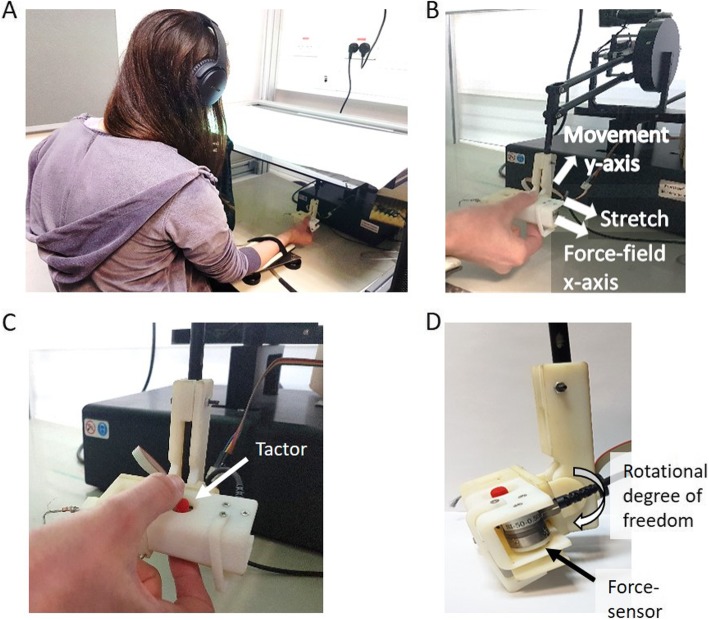Fig. 1.
Experimental setup. a The participants were seated in front of a screen, while holding the skin-stretch device. Participants’ arm was attached to an air-sled wrist supporter, and they wore noise-cancelling headphones. b The skin-stretch device was attached to a haptic device that was used to apply the force-field and to record position, velocity and forces. Desired movement direction was in the frontal, y-axis, away from the body of the participant and in the horizontal plane, and the force-filed and skin-stretch were applied in lateral, x-axis. c Participants’ thumb and index finger were located on the moving tactors (red pins with high-friction surface) that stretched the skin of the finger pad. d A force sensor was used to record the grip force that was applied on the skin-stretch device. In addition, we added a rotational degree of freedom in the connection between the skin-stretch device and the haptic device, such that throughout the movement the stretch will be applied in a perpendicular direction to the desired movement direction

